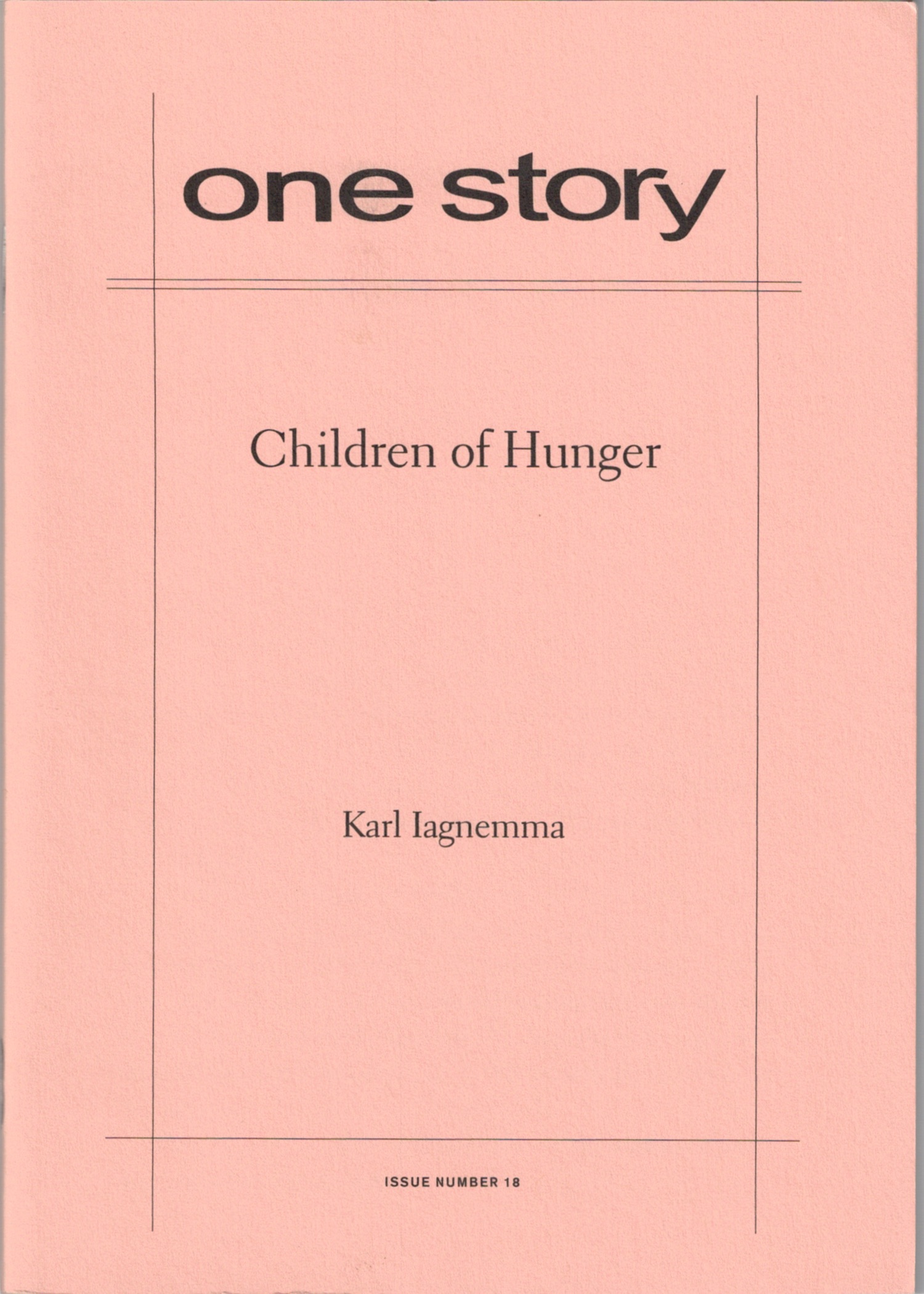
Children of Hunger
$2.50
Sold out
Excerpt
Sault Ste. Marie, 1822
She remembers the heat, that night, and the smell of gunsmoke drifting over the straits. Bonfires flickered along the riverbank, throwing shadows from dancing voyageurs; occasionally a Métis woman stepped into the firelight and imitated their clumsy reel. Traders and natives sat in loose circles, waving at mosquitoes that hung as thick as fog. Shrill strains from a fiddle rose and faded in the chalky sky. In their cabin, beside the Presbyterian church: a groan, a slap of damp flesh, a finger of moonlight pointing at her white-blond hair on the pillow. Her husband’s eyes were squeezed shut in concentration, and Julia found herself staring at his eyelids, the skin wrinkled and slack, like tiny silk draperies. The sight was mesmerizing and strangely arousing. She twisted his nightshirt in her fist. Then a rap on the door that immediately repeated itself: Docteur, s’il vous plaît. À l’aide!
Karl Iagnemma
Karl Iagnemma’s short stories have won the Paris Review Discovery Prize and been selected for the Best American Short Stories and Pushcart Prize anthologies. His writing has appeared in Tin House and Zoetrope, among other publications. His first collection of stories, On the Nature of Human Romantic Interaction, will be published in April by the Dial Press. He is currently a research scientist in the mechanical engineering department at the Massachusetts Institute of Technology, specializing in robotics.
Q&A by Hannah Tinti
- HT: Where did the idea for this story come from?
- KI: The idea came from a historical incident—in the 1820’s and 30’s a doctor named William Beaumont performed experiments very similar to the ones in the story on a French-Canadian voyageur named Alexis St. Martin. I first read about these experiments in the Detroit metropolitan airport, waiting to board a flight, and I knew immediately that I wanted to write about the weird dynamic between a medical researcher and a reluctant subject. Julia’s character is invented, but she appeared during the story’s first imaginings, and quickly became the story’s focus. I wondered how Beaumont’s wife felt about these groundbreaking but creepy experiments.
- HT: Were any of these characters based on real people?
- KI: They were inspired by real people, but not based on them. Dr. Barber and Julia don’t resemble William Beaumont and his wife, Deborah; by all accounts Doctor Beaumont was a nice guy, and Deborah was a very decent woman. I also have no idea if Alexis St. Martin was, like my voyageur Roleau, a lecherous drunkard. So, the obsessiveness, coldness, and weirdness of my fictional folk is strictly a product of my imagination.
- HT: What kind of research did you do to make this piece historically accurate?
- KI: As it turned out, nearly all of the research I ended up “needing” came from a five-page article in a book entitled “Voyages Into Michigan’s Past” by Larry Massie. It’s a micro-press anthology of Massie’s columns on Michigan history that he wrote for local newspapers—the kind of book you find in the “local interest” section of bookstores. Seems like that’s where the good books often are. I did end up reading the monograph that resulted from Beaumont’s research: Experiments and Observations on the Gastric Juice and the Physiology of Digestion. It’s a pretty fascinating book, but I only drew one or two details from the text.
- HT: What is your favorite part of this story?
- KI: My favorite part of the story isn’t really in the story. It was realizing that Beaumont Hospital in Troy, Michigan, where I was rushed to for numerous childhood emergencies, was named after the good doctor.
- HT: How long did it take you to complete this story?
- KI: Probably three months from start to finish.
- HT: What are you working on now?
- KI: I’m working on a novel about an ill-fated scientific expedition to the upper peninsula of Michigan in the 1840s. Part of the novel tells the story of the expedition, which is trying to unearth evidence that the lost tribes of Israel (of Old Testament lore) were once in Michigan; the other part follows a troubled minister who travels from Massachusetts to Michigan to track down his young son, who’s a member of the expedition. The novel will be published by the Dial Press, probably (hopefully) in 2005.